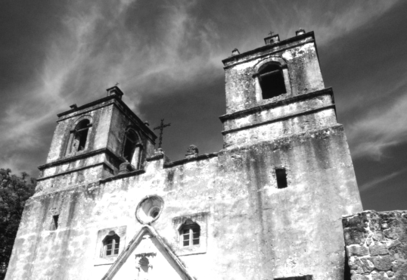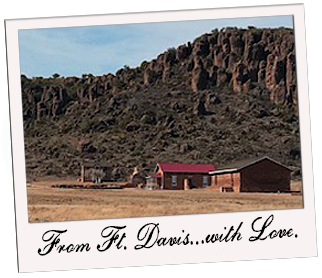Discover Texas
The Route to Texas
Recorded history dates Texas territory exploration as far back as 1527 under Cabeza de Vaca. Ships financed by the Spanish throne set sail to the new world in search of new life, to establish Spanish domination, and to spread the holy order movement, which the Spanish believed was "the conception of humanity". Although, Columbus made landfall in the West Indies in 1492 and established Spanish rule, by the 1500's the Spanish Empire occupied what is now Mexico.
The route that built the prosperous territory, now designated as a National Historic Trail, facilitated early Spanish expansion and spurred economic growth for a new frontier.
El Camino Real de los Tejas. The royal road was also known as the King's highway has an existence for more than 300 years. Explorer, Alonzo de Leon, followed Indian trails up toward east Texas to establish missions along the route. As Texas became a Mexican territory, El Camino Real served as a major thoroughfare between Mexico and East Texas. The route extends from the Rio Grande/Guerrero, Mexico to Natchitoches, Louisiana. Texas cities along this route include San Antonio, New Braunsfels, Austin, Crockett, Nacogdoches, Alto, and San Augustine. Connecting along the route are major rivers: Rio Grande, Nueces, Frio, San Antonio, Guadalupe, Colorado, Brazos, Trinity, Neches, and Sabine.
Missions Along the Way. The Spanish, eager to establish the new world, built 35 missionary settlements. The construction period was lengthy often compelled by financial and political restraints. Soldiers provided protection against the wilderness and raiding Indian tribes. But for those nomadic tribe converts and for the friars appointed to teach the movement, conflict with the soldiers was an ongoing struggle.
San Antonio de Valero, built in 1718, is the most important settlement in history. Also known as the Alamo, this settlement was a self-sufficient way-station between the Rio Grande and east Texas. The mission survived three moves, one destroyed by a hurricane in 1724, until its permanent destination near the San Antonio River. The structure included two wings made of adobe but later replaced by stone. The interior of the walls included a long barrack, the priest's residence, the courtyard, a dining room, the friar's room, kitchens, offices, and guest rooms. Adjacent to the barracks was the shrine which is the only unfinished standing building today. A structural flaw caused a collapse of the towers above the shrine.(texasalmanac.com)
Defense was a priority for all established settlements. Constant harassment by the Apache and subsequently the Comanche required patrol which at some point, the military guard was made unavailable. Smaller tribes looked for refuge in the Spanish missions. As these Indians assimilated in the community, they served as mission guards and warded off hostility.
The devine, European architecture is uplifting and the influence of Spanish culture forever exists in our lives today. You will be transcended into the lives of the explorers, the Franciscans, and the Indians as you walk in the path of mission history.
The taming of the West. In 1849, by order of Brevet Major Gen. George Brooke, settlers would finally received relief from the constant Indian raids and unrest that plagued annexed Texas. The establishment of army installations from the Rio Grande to the Red River allowed for the protection of westward expansion. Each installation included a particular number of soldiers whose duties, for the most part, included freight wagon train and mail escorts, patrolling the terrain for Indians, and administer punishment on raiders. The latter proved difficult as soldiers found Indians to be quite the skillful horseman.
When Anglo settlers felt the west had become tamed, the outbreak of a civil war was the beginning of further troubles. Military protection had ceased. Settlers took up arms once again until the end of the war.
The U.S. campaign to stop the violence of Indian raids was brought to a close when the reservations were established. However, the campaign triggered oppression of native Indians
As the railroad laid tracks westward, the forts were replaced by towns founded along the railroad. Protection and standard of living for Texans improved. However, since the beginning of Austin's colony settlement in 1820s, a volunteer group had assembled. In 1835, as part of a complete military structure, the
Texas Rangers made up of 25 men, was organized. Corruption and an unstable force nearly wiped out the regiment. After the civil war, the Texas legislature reformed control and purpose. Protection against hostile Indians was ongoing but restoring law and order was necessary as the outlaw sought his place in the western frontier.
- Fort Bliss in El Paso is a missile base today.
- Fort Worth thrived and became a city.
- Fort Davis is a national historical park.
- Fort Stockton a small town boomed by the oil industry.
- Fort Concho is a national historical landmark.
- Fort Griffin, Fort Richardson, Fort McKavett, Fort Lancaster are state historical parks.
- Fort Phantom Hill & Fort Chadbourne are sponsored by local governments/historical groups. (www.texasalmanac.com)
Trading Posts The economic channel to the frontier.
Early Texas was established by the Spanish crusade. Later, as Texas joined the union, forts were established to bring order to the wild west. See how the new world became an inspiration for many explorers along the El Camino Real and visit forts that help tame the west.
Texas Forts and Missions






